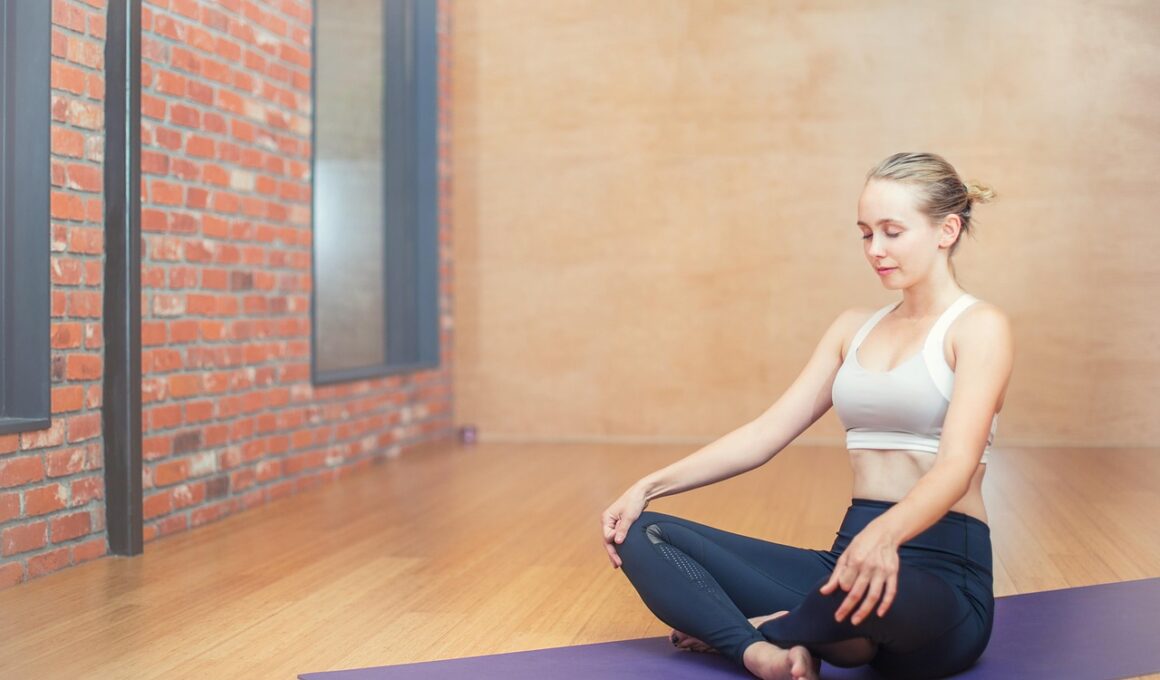Simple Mindfulness Exercises for Busy People
In today’s fast-paced world, finding time for mindfulness may seem challenging. Yet, integrating mindfulness exercises into our daily routine requires merely a few moments. The idea is to practice being present regardless of the activities we engage in throughout our day. Simple techniques are necessary, such as using our breath to anchor ourselves in the current moment. When we notice stressful moments creeping in, we can often pause for a few deep breaths, offering us needed clarity and calm. Scheduling these intervals throughout the day can enhance overall mindfulness. These exercises do not necessitate lengthy commitments; even short, focused periods can be beneficial. Consider utilizing breaks at work to engage in breathing exercises or mindfulness meditation. Mindful walking during your commute, or even savoring a meal can help facilitate focus. Remember that every second counts, and being mindful can lead to greater mental clarity and emotional resilience. The basics of mindfulness require practice, so including them gradually into our life can create significant transformations. So embrace each moment with awareness to foster a more profound sense of peace within your busy life.
Short Mindfulness Breathing Exercises
Breath awareness is a foundational aspect of mindfulness, and it can be practiced anywhere. A simple exercise involves taking slow, intentional breaths. Begin by inhaling deeply through your nose for a count of four, allowing your abdomen to rise. Hold for a moment before gently exhaling through your mouth for a count of six, feeling any tension leave your body. Repeat this cycle five times to induce a sense of calm. Whenever feelings of stress arise, remember this technique and take a moment to reset yourself. You can practice this exercise while sitting, standing, or even during a walk; it is incredibly versatile. The beauty of breath-focused mindfulness is its accessibility, allowing us to return to our breath whenever necessary. That precious sense of grounding improves focus and feelings of relaxation. Another variation involves adding visualization. Picture a serene landscape as you breathe, mentally transporting yourself there for a minute. This exercise further enhances relaxation by directing your focus away from worries and onto something peaceful. Incorporating these breath exercises into your routine can lead to a profound change in how you handle the stressors of daily life.
Another beneficial mindfulness exercise involves engaging the senses, particularly during mundane tasks. This simple technique can elevate everyday experiences into moments of mindfulness. When you eat, prepare a meal, or drink a cup of tea, focus entirely on the flavors, textures, and aromas. Eating a single slice of fruit, for instance, can become a subjective experience. Identify each flavor component; notice the juiciness, sweetness, or even tartness distinctly. While engaging in these simple acts, consciously put aside distractions, including your phone, to fully embrace the moment. This sensory immersion allows you to practice true mindfulness, deepening your experience and appreciation for normal activities. Moreover, repeating this practice during various daily tasks like showering or washing dishes helps promote a mindfulness habit. When washing dishes, notice the temperature of the water, the texture of the crockery, and the scent of the soap. Such deliberate attention fosters a calming atmosphere as you observe regular actions with a fresh perspective. There, even a routine task becomes a mindful moment that brings joy and presence into your busy day.
Mindful Walking Practices
Mindful walking is a unique approach to combine movement with mindfulness, ideal for busy individuals. Instead of rushing during your commute, consider switching to a mindful approach while walking. Focus your attention on the sensations experienced throughout the pavement texture underfoot and how you balance. Notice how each step reflects a natural rhythm, embracing the present moment. If thoughts drift towards future tasks or past experiences, gently bring that focus back to the rhythm of walking. This practice does not require a designated space or specific time and can be incorporated into your daily travels. Aim for at least a few minutes of mindful walking, paying attention to the sights, sounds, and smells around you. With practice, you’ll find this enhances clarity and awareness. Repeating this exercise can transform mundane walks into rejuvenating experiences. Whenever you encounter obstacles or time pressure, returning to this practice can provide a comforting sense of grounding under tension. Mindful walking serves as an accessible opportunity to cultivate awareness while enhancing your physical activity. Consider where this practice can fit within your daily dependencies to improve well-being during busier moments.
Incorporating mindfulness into our daily life can also include gratitude practice. Taking time to appreciate small joys can positively transform our perspective. You could begin or end each day by reflecting on three things for which you are grateful. It can be anything, from a pleasant interaction to the sun shining through your window. Write these reflections down in a journal as a way to commit these moments to memory. Reflecting on gratitude shifts focus from what is lacking in life to what is present, fostering more positivity. This easy exercise encourages feelings of contentment and satisfaction that often can improve mental health. Set a time aside during breakfast or just before sleep to integrate this practice fully. In addition, consider sharing gratitude with others; expressing thanks to someone can strengthen your connection. A simple text or personal note can make both parties feel valued. Over time, these gratitude reflections create a mental shift that enhances your overall mindset. By embracing and acknowledging the little things, even amidst daily chaos, we cultivate mindfulness and joy within our routine, reinforcing a positive and enriching life habit.
Mindful Moments During Routines
Another impactful way to embrace mindfulness involves transforming daily routines into mindful moments. Many tasks, such as brushing teeth, drinking coffee, or even driving can become mindfulness practices. When brushing your teeth, focus on the sensations: the taste of the toothpaste, the feeling of the brush, and the sound of the brush against your teeth. This intentional focus shifts your attention back to the current task, reducing wandering thoughts. By concentrating on these sensations, you cultivate presence and open the door to fewer distractions. Similar approaches apply when drinking coffee; relish the warmth of the cup, the aroma, and the flavors. Allow yourself to savor each sip instead of multitasking while rushing through the moment. These tiny adjustments not only enhance simple daily activities but also contribute to mindfulness. Such transitions can induce calmness and relaxation amidst bustling moments. Routine tasks do not have to be rushed; they can serve as anchors in your day to reclaim focus and tranquility. Repeat this practice as often as possible throughout the day, creating a greater sense of presence in your life.
Practicing mindfulness requires compassion towards oneself, and being flexible is essential. For busy individuals, a rigid schedule can cause frustration if mindfulness practices feel inconvenient. Instead, allow yourself the freedom to adapt your mindfulness exercises based on current demands. Today, you may have the opportunity to engage in a guided meditation for twenty minutes, while tomorrow perhaps you’ll only have five minutes to focus on your breath. Accept the moments you can act mindfully instead of lamenting what isn’t feasible. Every effort counts, whether it’s a five-minute break or full meditation. Even streamlined mindfulness practices can produce profound benefits, and it’s imperative to recognize that mindfulness exists on a spectrum. By having realistic expectations around time commitment, self-compassion flourishes. It encourages consistent practice, even if it seems scattered throughout busy days. Ultimately, the goal is finding mindfulness amidst the chaos, so remember that there are always opportunities to practice—no matter how small. Embrace your mindfulness journey without pressure; each step counts and contributes towards greater emotional well-being.
Building a Mindfulness Habit
Creating a steadfast mindfulness habit involves consistency and gradual incorporation. Start by identifying specific times in your day that can be designated for mindfulness activities. Once you pinpoint suitable moments, the key is to set reminders for yourself, making these practices a non-negotiable part of your routine. Consistency leads to habit formation, so aim to engage in mindfulness exercises daily. As you become accustomed to these practices, you may find it beneficial to gradually increase their duration or frequency. Whether it’s twice a day or incorporating varied techniques, find a rhythm that resonates with you. Tracking your progress, perhaps via journaling, can solidify accountability while observing improvements. Celebrate your effectiveness in carving out time for mindfulness, recognizing every small step contributes to overall development. Consider involving family members or friends in the journey, encouraging a supportive environment. Share exercises together, or exchange reflections related to mindfulness experiences. Building a sense of community strengthens motivation and engages both social support and shared growth. Ultimately, these strategies pave the way towards a fulfilling mindfulness journey, allowing you to stay grounded even amidst busy times.





